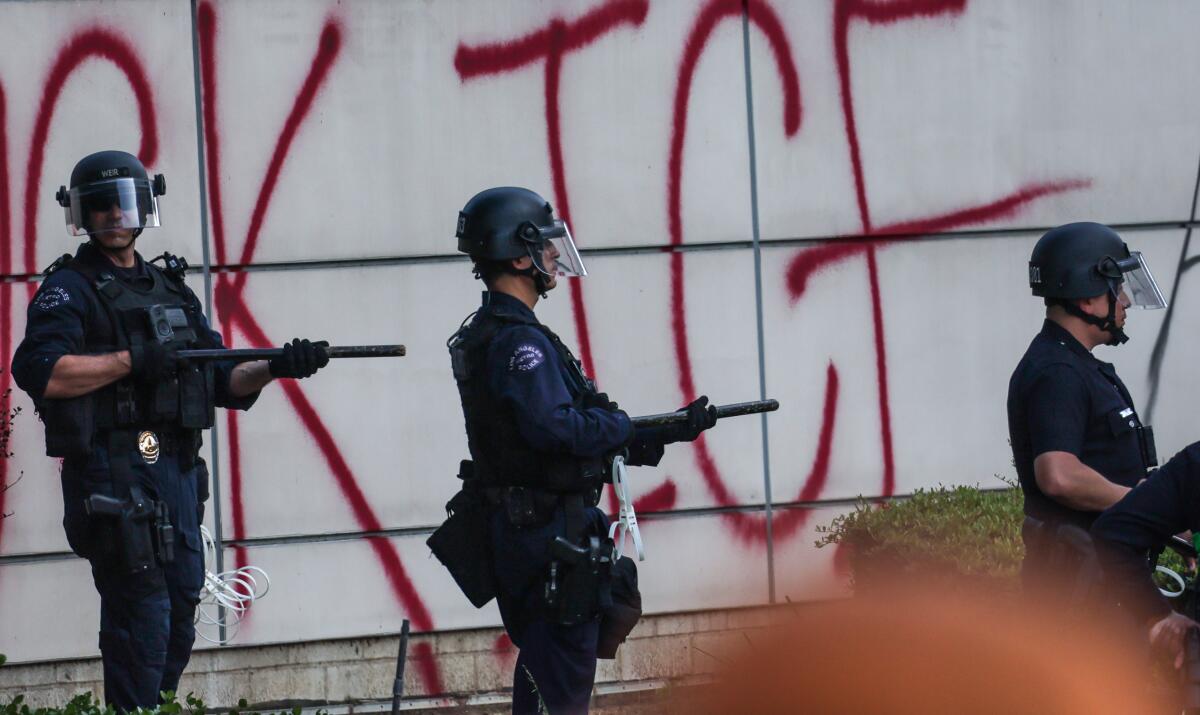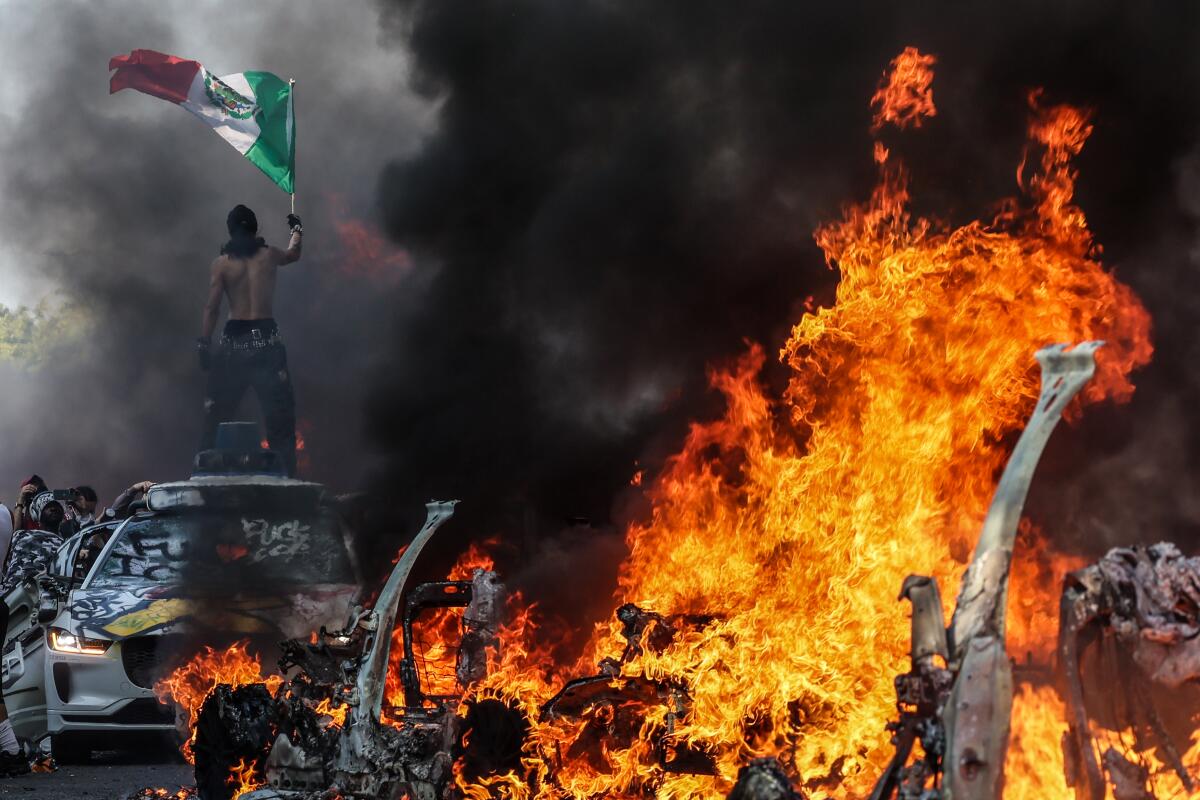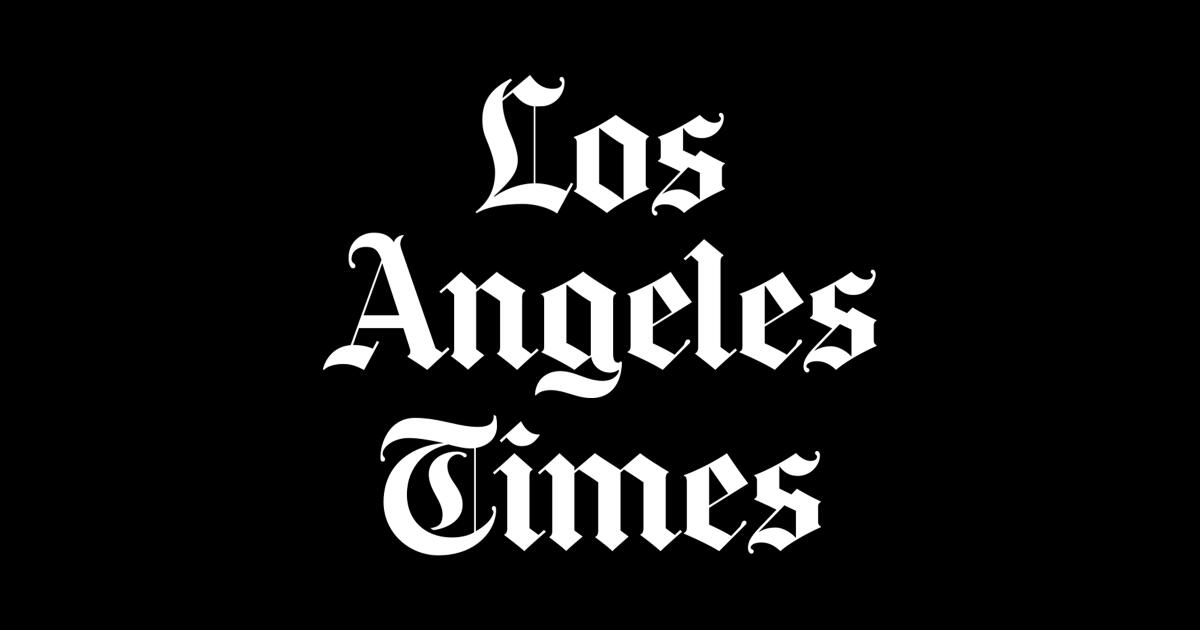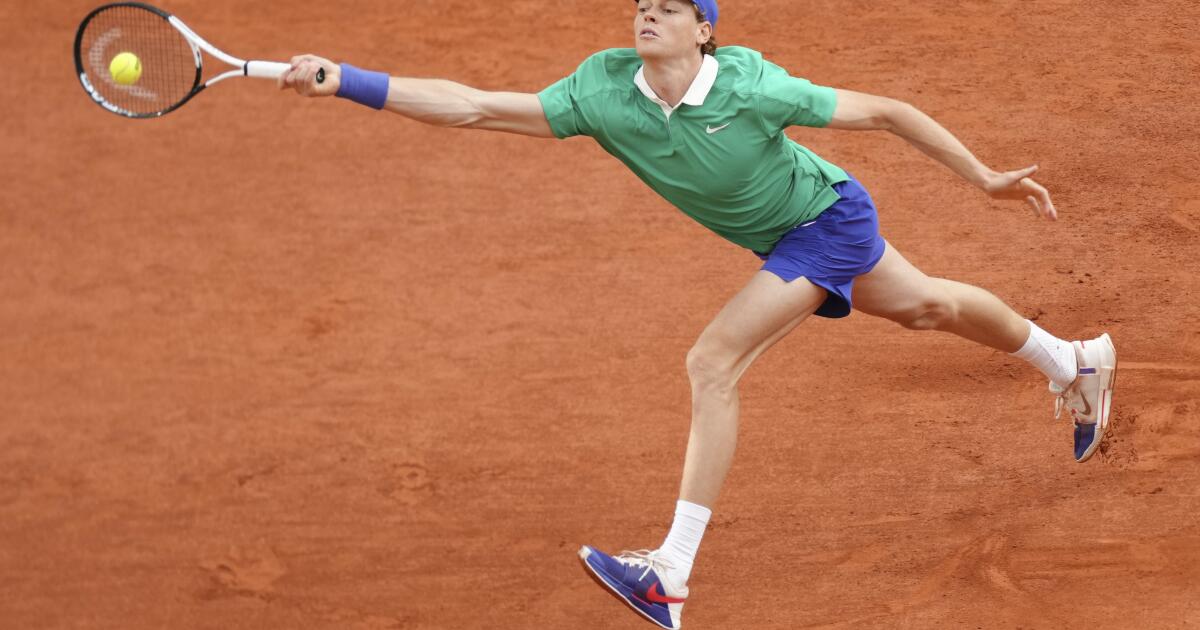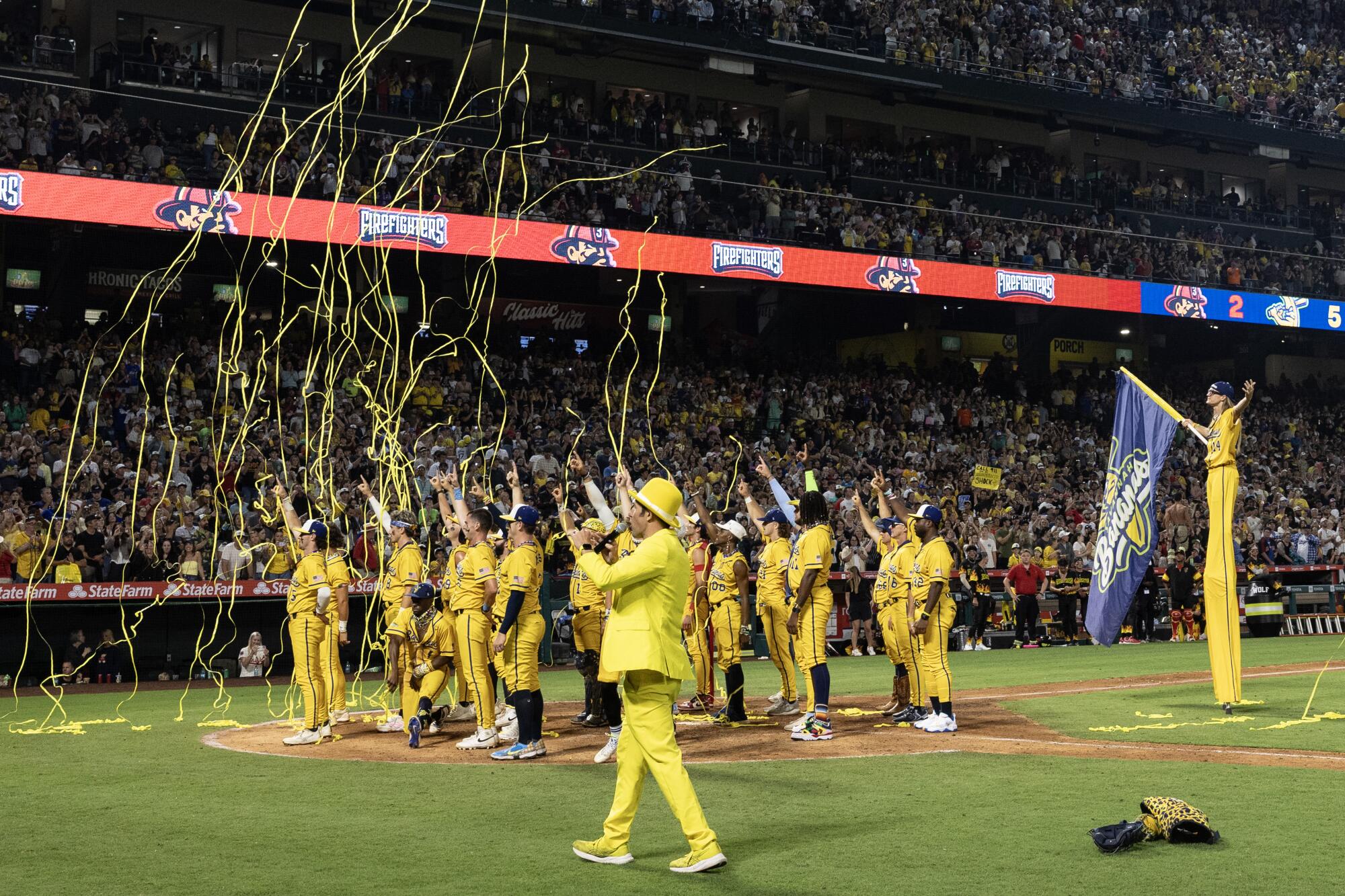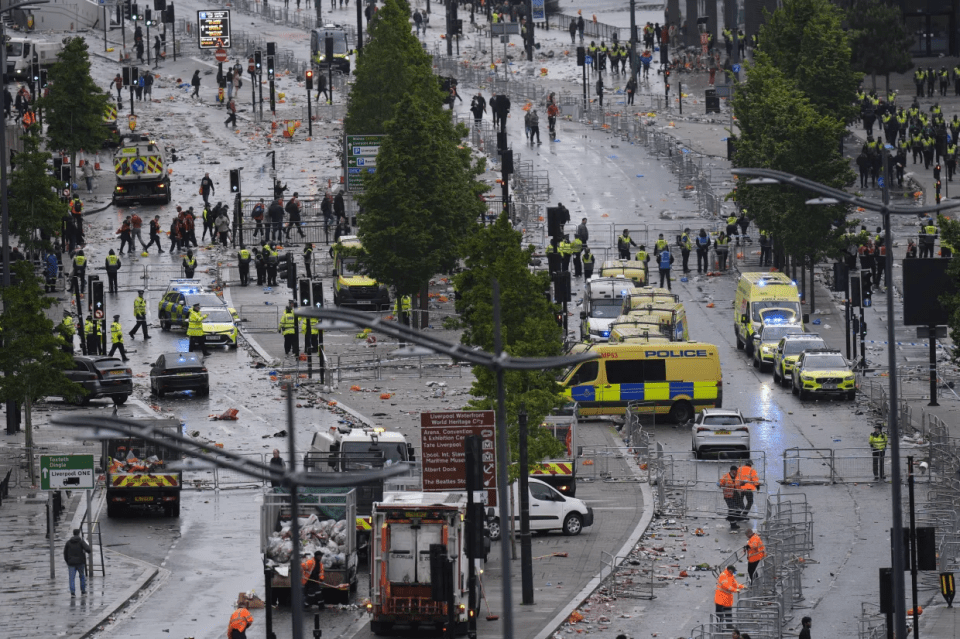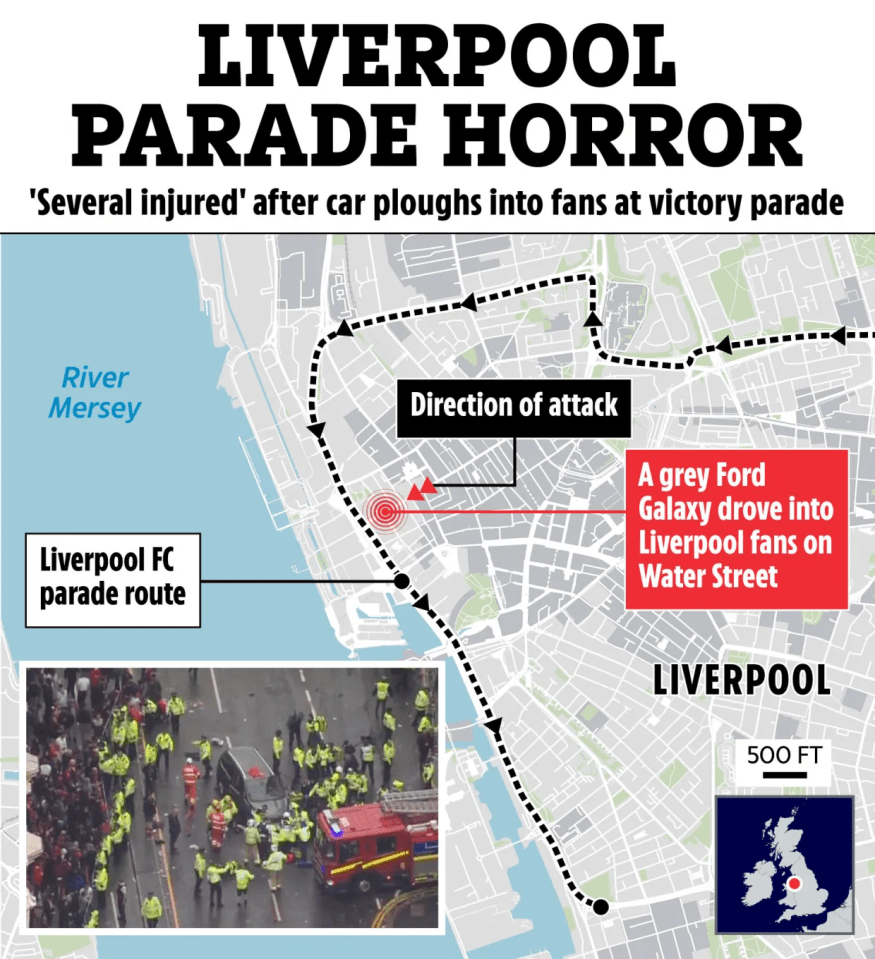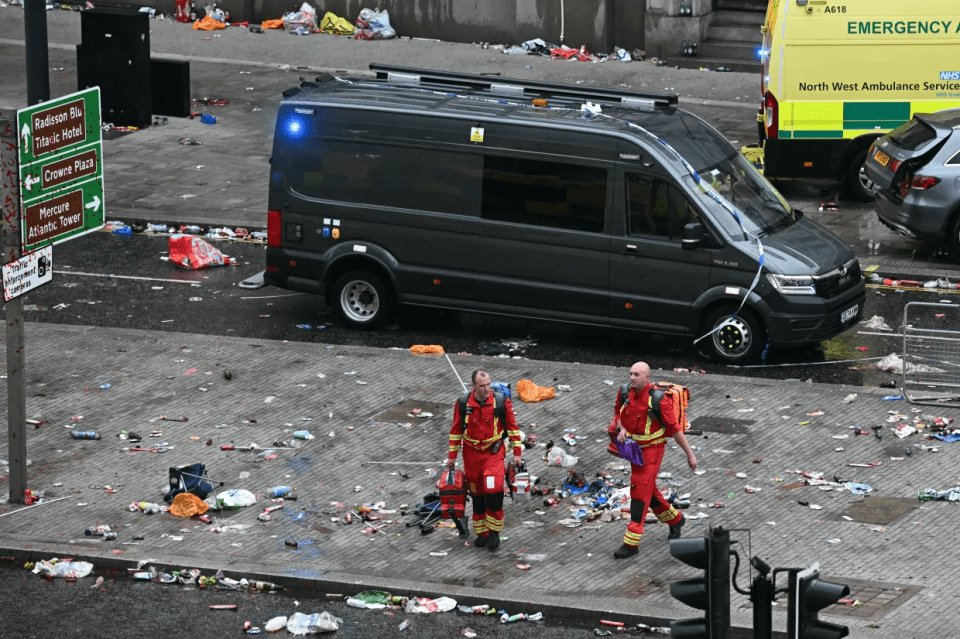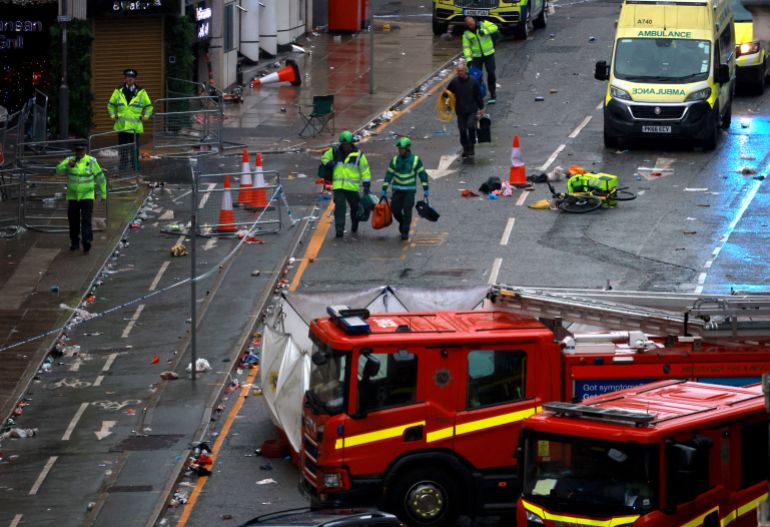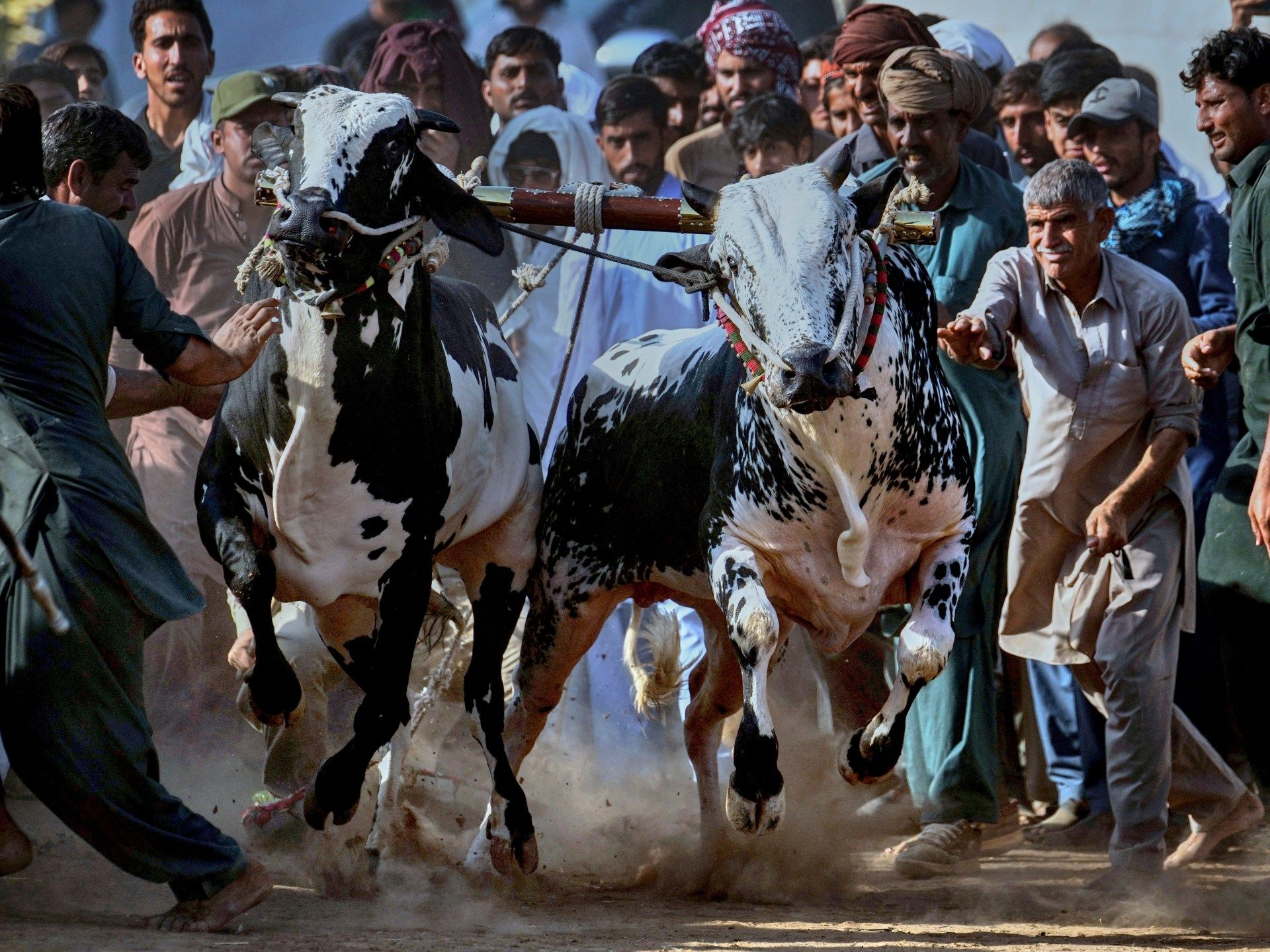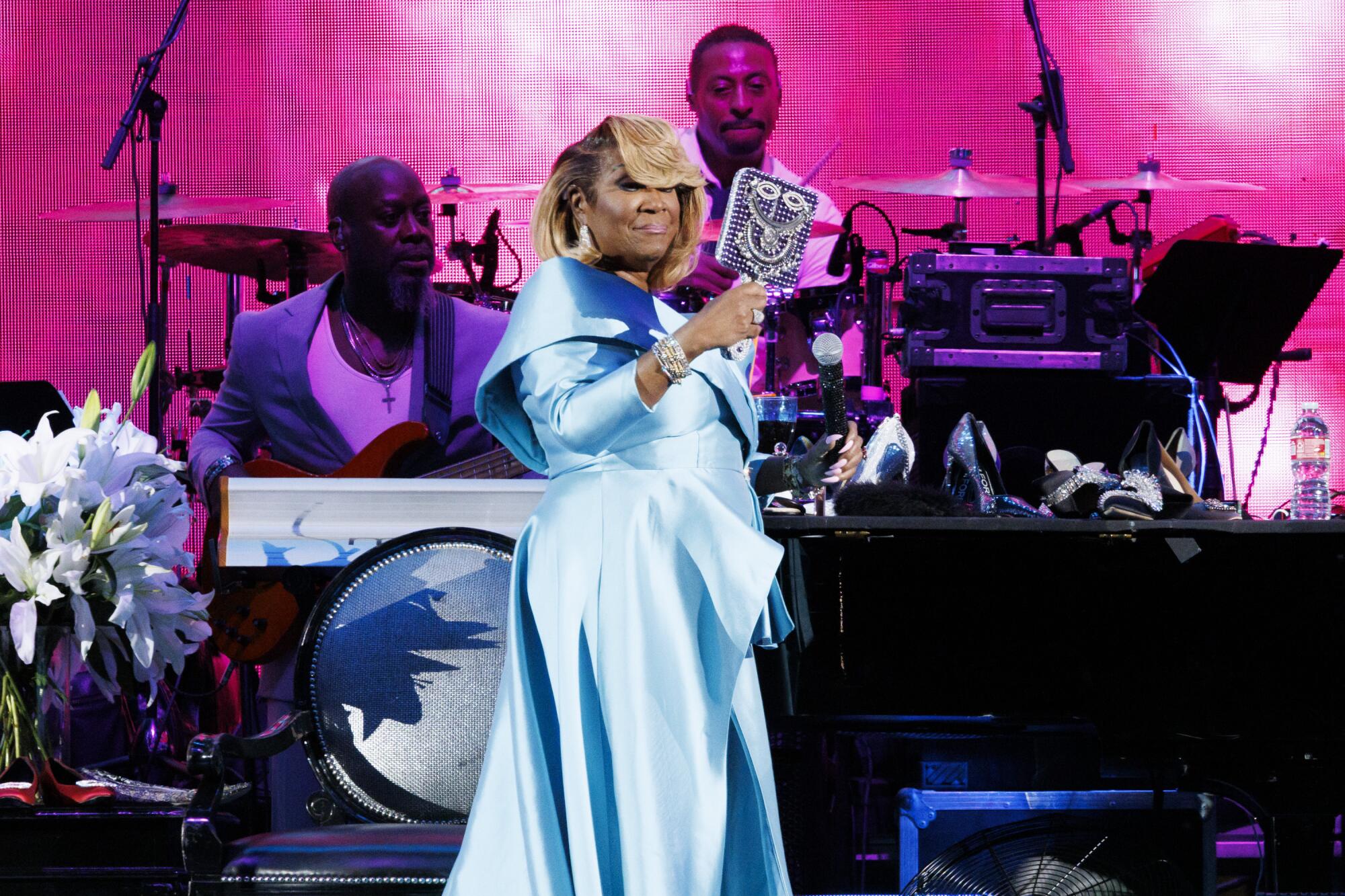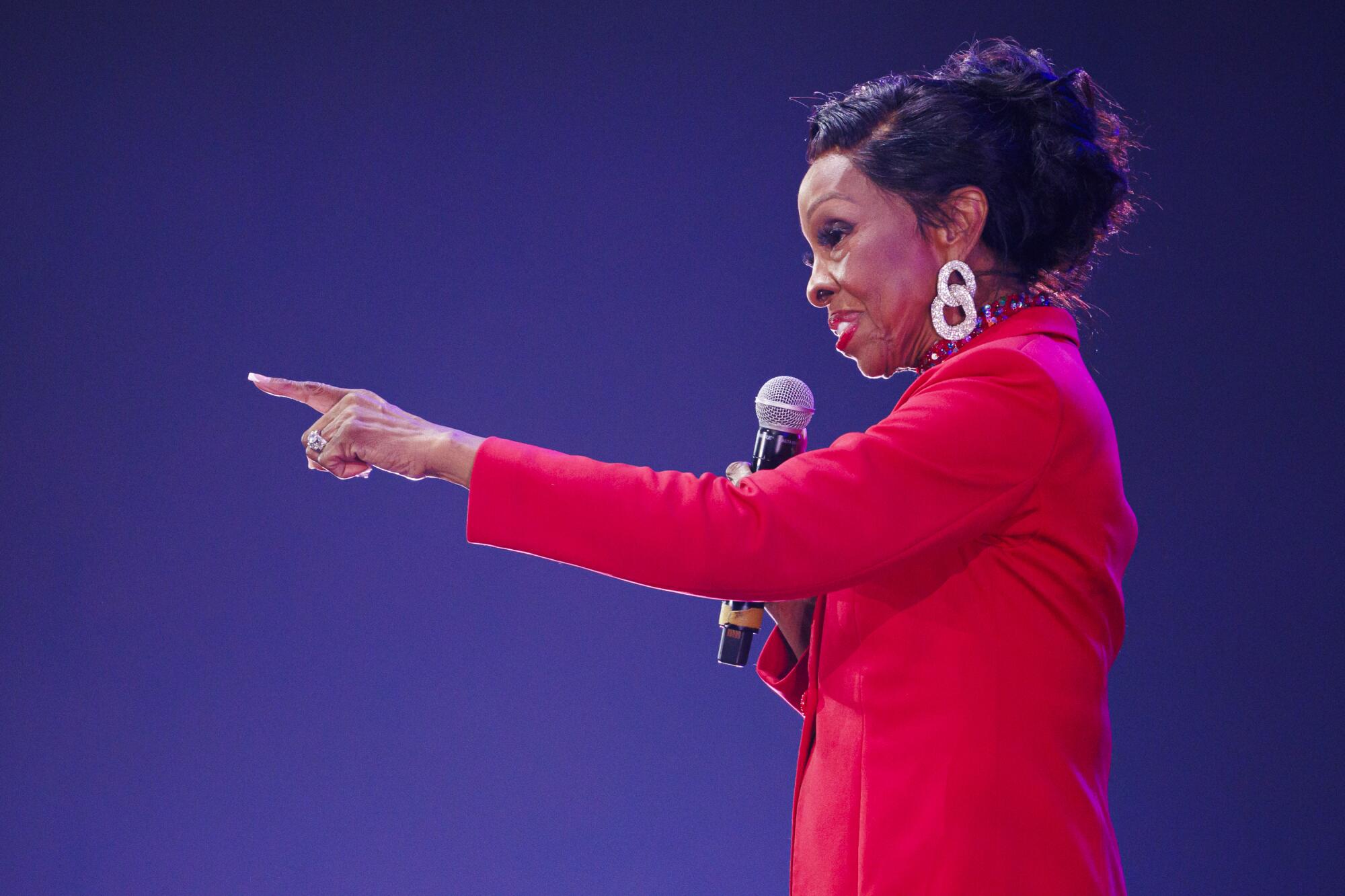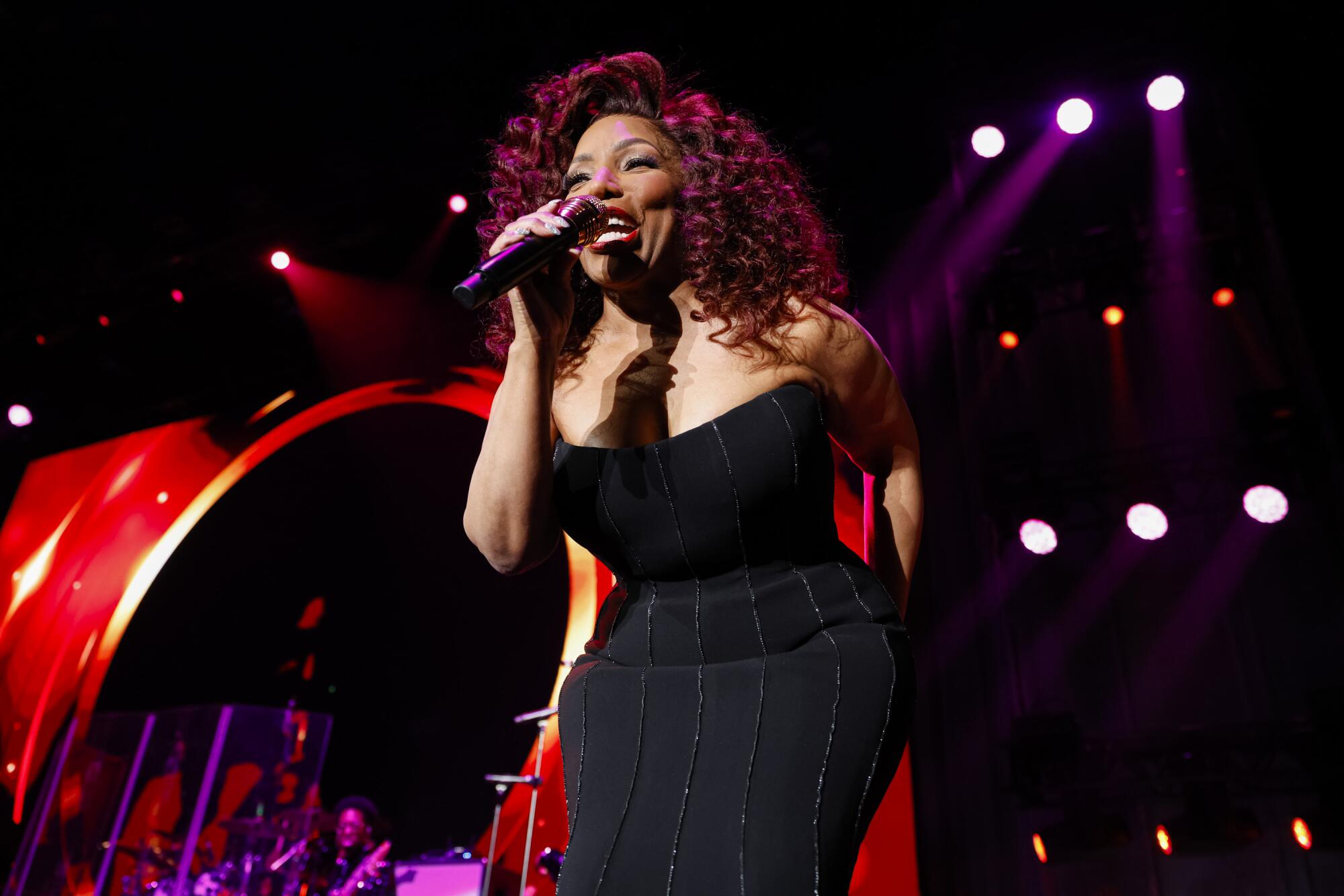LAPD protest response once again triggers outrage, injuries, lawsuits
Bridgette Covelli arrived near Los Angeles City Hall for last Saturday’s “No Kings” festivities to find what she described as a peaceful scene: people chanting, dancing, holding signs. No one was arguing with the police, as far as she could tell.
Enforcement of the city’s curfew wouldn’t begin for hours. But seemingly out of nowhere, Covelli said, officers began to fire rubber bullets and launch smoke bombs into the crowd, which had gathered to protest the Trump administration’s aggressive immigration enforcement campaign.
“No dispersal order. Nothing at all,” she said. “We were doing everything right. There was no aggression toward them.”
Covelli, 23, grabbed an electric bike and turned up 3rd Street, where another line of police blocked parts of the roadway. She felt a shock of pain in her arm as she fell from the bike and crashed to the sidewalk.
In a daze, she realized she was bleeding after being struck by a hard-foam projectile shot by an unidentified LAPD officer.
The young tattoo artist was hospitalized with injuries that included a fractured forearm, which has left her unable to work.
“I haven’t been able to draw. I can’t even brush my teeth correctly,” she said.
Bridgette Covelli says she was shot with a less-lethal round by law enforcement last week during the ‘No Kings Day’ protest in downtown Los Angeles, which resulted in a fractured arm that has put her out of work as a tattoo artist.
(Luke Johnson / Los Angeles Times)
She is among the demonstrators and journalists hurt this month after being targeted by LAPD officers with foam projectiles, tear gas, flash-bang grenades and paintball-like weapons that waft pepper spray into the air.
Despite years of costly lawsuits, oversight measures and promises by leaders to rein in indiscriminate use of force during protests, the LAPD once again faces sharp criticism and litigation over tactics used during the past two weeks.
In a news conference at police headquarters last week, LAPD Chief Jim McDonnell promised “a comprehensive review when this is all done,” while also defending officers he said were dealing with “a very chaotic, dynamic situation.”
Police officials said force was used only after a group of agitators began pelting officers with bottles, fireworks and other objects. At least a dozen police injuries occurred during confrontations, including one instance in which a protester drove a motorcycle into a line of officers. L.A. County prosecutors have charged several defendants with assault for attacks on law enforcement.
Behind the scenes, according to communications reviewed by The Times and multiple sources who requested anonymity because they were not authorized to speak publicly, tensions sometimes ran high between LAPD commanders and City Hall officials, who pushed for restraint in the early hours of the protests downtown.
Bridgette Covelli holds a 40mm foam round like the type fired by Los Angeles police during a protest she and thousands of others attended last weekend in opposition to the Trump administration’s policies.
(Luke Johnson / Los Angeles Times)
On June 6 — the Friday that the demonstrations began — communication records show Mayor Karen Bass made calls to LAPD Capt. Raul Jovel, the incident commander, and to McDonnell. In the days that followed, sources said Bass or members of her senior staff were a constant presence at a command post in Elysian Park, from where local and federal officials were monitoring the on-the-ground developments.
Some LAPD officials have privately grumbled about not being allowed to make arrests sooner, before protesters poured into downtown. Although mostly peaceful, a handful of those who flooded the streets vandalized shops, vehicles and other property. LAPD leaders have also pointed out improvements from past years, including restrictions on the use of bean-bag shotguns for crowd control and efforts to more quickly release people who were arrested.
But among longtime LAPD observers, the latest protest response is widely seen as another step backward. After paying out millions over the last decade for protest-related lawsuits, the city now stares down another series of expensive court battles.
“City leaders like Mayor Bass [are] conveniently saying, ‘Oh this is Trump’s fault, this is the Feds’ fault.’ No, take a look at your own force,” said longtime civil rights attorney James DeSimone, who filed several excessive force government claims against the city and the county in recent days.
A spokesperson for Bass didn’t immediately respond to a request for comment.
McDonnell — a member of the LAPD command staff during an aggressive police crackdown on immigrant rights demonstrators on May Day in 2007 — found himself on the defensive during an appearance before the City Council last week, when he faced questions about readiness and whether more could have been done to prevent property damage.
“We’ll look and see, are there training issues, are there tactics [issues], are there less-lethal issues that need to be addressed,” McDonnell told reporters a few days later.
One of the most potentially embarrassing incidents occurred during the “No Kings” rally Saturday, when LAPD officers could be heard on a public radio channel saying they were taking friendly fire from L.A. County sheriff’s deputies shooting less-lethal rounds.
Three LAPD sources not authorized to speak publicly confirmed the incident occurred. A spokesperson for the Sheriff’s Department said in a statement that the agency “has not received reports of any ‘friendly fire’ incidents.”
Motorists encountered mounted LAPD officers as curfew enforcement began near Temple Street on June 10.
(Gina Ferazzi / Los Angeles Times)
Some protesters allege LAPD officers deliberately targeted individuals who posed no threat.
Shakeer Rahman, a civil rights attorney and community organizer with the Stop LAPD Spying Coalition, said he was monitoring a demonstration snaking past LAPD headquarters on June 8 when he witnessed two colleagues who were demanding to know an officer’s badge number get shot with a 40mm less-lethal launcher at close range.
In a recording he shared of the incident, Rahman can be heard confronting the officer, who threatens to fire as he paces back and forth on an elevated platform.
“I’m gonna pop you right now, because you’re taking away my focus,” the officer is heard saying before raising his weapon over the glass partition that separated them and firing two foam rounds at Rahman, nearly striking him in his groin.
“It’s an officer who doesn’t want to be questioned and knows he can get away with firing these shots,” said Rahman, who noted a 2021 court injunction bans the use of 40mm launchers in most crowd-control situations.
Later on June 8, as clashes between officers and protesters intensified in other parts of downtown, department leaders authorized the use of tear gas against a crowd — a common practice among other agencies, but one that the LAPD hasn’t used in decades.
“There was a need under these circumstances to deploy it when officers started taking being assaulted by commercial fireworks, some of those with shrapnel in them,” McDonnell said to The Times. “It’s a different day, and we use the tools we are able to access.”
City and state leaders arguing against Trump’s deployment of soldiers to L.A. have made the case that the LAPD is better positioned to handle demonstrations than federal forces. They say local cops train regularly on tactics beneficial to crowd control, including de-escalation, and know the downtown terrain where most demonstrations occur.
Police prepare to fire less-lethal projectiles at protesters after an unlawful assembly was declared from the “No Kings” protest on Temple Street in downtown Los Angeles on June 14.
(Genaro Molina / Los Angeles Times)
But numerous protesters who spoke with The Times said they felt the LAPD officers were quicker to use violence than they have been at any point in recent years.
Raphael Mamoun, 36, followed the June 8 march from City Hall to the federal Metropolitan Detention Center on Alameda Street. Mamoun, who works in digital security, said his group eventually merged with other demonstrators and wound up bottlenecked by LAPD near the intersection of Temple and Alameda, where a stalemate with LAPD officers ensued.
After roughly an hour, he said, chaos erupted without warning.
“I don’t know if they made any announcement, any dispersal order, but basically you had like a line of mounted police coming behind the line of cops that were on foot and then they just started charging, moving forward super fast, pushing people, screaming at people, shooting rubber bullets,” he said.
Mamoun’s complaints echoed those of other demonstrators and observations of Times reporters at multiple protest scenes throughout the week. LAPD dispersal orders were sometimes only audible when delivered from an overhead helicopter. Toward the end of Saturday’s hours-long “No Kings” protests, many demonstrators contended officers used force against crowds that had been relatively peaceful all day.
The LAPD’s use of horses has also raised widespread concern, with some protesters saying the department’s mounted unit caused injuries and confusion rather than bringing anything resembling order.
One video captured on June 8 by independent journalist Tina-Desiree Berg shows a line of officers on horseback advance into a crowd while other officers fire less-lethal rounds at protesters shielding themselves with chairs and road signs. A protester can be seen falling to the ground, seemingly injured. The mounted units continue marching forward even as the person desperately tries to roll out of the way. Several horses trample over the person’s prone body before officers arrest them.
At other scenes, mounted officers were weaving through traffic and running up alongside vehicles that were not involved with the demonstrations. In one incident on June 10, a Times reporter saw a mounted officer smashing the roof of a car repeatedly with a wooden stick.
“It just seems like they are doing whatever the hell they want to get protesters, and injure protesters,” Mamoun said.
Protesters were pushed back by LAPD officers on Broadway during the “No Kings Day” protest downtown.
(Carlin Stiehl / Los Angeles Times)
Audrey Knox, 32, a screenwriter and teacher, was also marching with the City Hall group on June 8. She stopped to watch a tense skirmish near the Grand Park Metro stop when officers began firing projectiles into the crowd.
Some protesters said officers fired less-lethal rounds into groups of people in response to being hit with flying objects. Although she said she was well off to the side, she was still struck in the head by one of the hard-foam rounds.
Other demonstrators helped her get to a hospital, where Knox said she received five staples to close her head wound. In a follow-up later in the week, a doctor said she had post-concussion symptoms. The incident has made her hesitant to demonstrate again, despite her utter disgust for the Trump administration’s actions in Los Angeles.
“It just doesn’t seem smart to go back out because even when you think you’re in a low-risk situation, that apparently is not the case,” she said. “I feel like my freedom of speech was directly attacked, intentionally.”
Times staff writers Julia Wick, Connor Sheets and Richard Winton contributed to this report.

